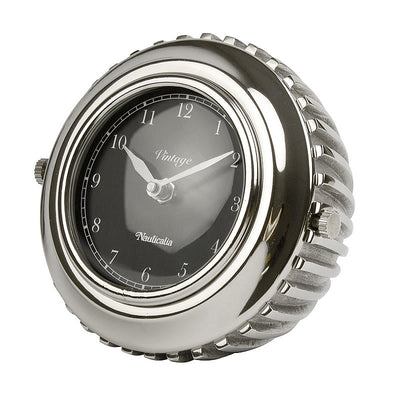Henry Blogg - 'The Greatest of the Lifeboatmen'
Generally considered to be the equivalent of the Victoria Cross, it's presented to only the most courageous and selfless individuals. Like the VC, the men who win it are very few and far between. And like the VC it is all too often awarded posthumously.
A Hero Among Heroes
Some of the men who have achieved this distinction are remembered in the 'RNLI's HOPE in the Great War'. This is a touring exhibition honouring the courage and determination of those who saved lives at sea during the years 1914-1918. It'll run until 2018 but it began last year in Cromer, at a museum dedicated to the memory of Henry George Blogg. Although he's the town's most famous son, Henry Blogg didn't gain the national recognition his achievements merited. Yet he was a hero amongst heroes, a man who lifeboat crews still regard as 'the greatest of the lifeboatmen'.
The most decorated volunteer in RNLI history, Henry Blogg was awarded three Gold and four Silver Medals for gallantry, as well as the George Cross and British Empire Medal. For courage such as his, superlatives seem inadequate. Better to let the facts speak for themselves...
Learning Seamanship - at Eleven
Born in 1876, Henry spent his earliest years in the care of his grandmother before moving to the home of his stepfather John Davies. A bright boy (he was top of his class) Henry nevertheless left school at eleven to help on the family's crab boat. He proved to be particularly adept at mastering the skills of seamanship and developed an exceptional knowledge of tides, currents, wind and weather. In January 1894, at the age of eighteen he joined the Cromer lifeboat crew.
Henry had to wait 12 months for his first rescue, but when it came it was a true baptism of fire - or rather snow, sleet and hail. In appalling conditions the crew rowed out to the stricken ship the Fair City of Gloucester before straining at the oars on the journey back to Yarmouth - a distance of about 30 miles.
Cox'n and a Gold Medal at 33
In November 1909 Henry Blogg was unanimously elected Coxswain of the Cromer lifeboat and eight years later won his first Gold Medal. This was for saving 11 men from the shattered hulk of the SS Fernebo. Henry and his crew (average age over 50) had already carried out one launch that bitter winter's day and then rowed in an open boat through mountainous seas to reach the wrecked ship. By the time they pulled alongside, the lifeboat crew had been struggling against the elements for nearly 14 hours.
Henry's second Gold Medal came 10 years later. In exceptionally perilous circumstances - and despite having been on duty for 28 hours - the Cromer lifeboat went to the assistance of the Dutch tanker SS Georgia that had broken in two on the Haisborough Sands. Fifteen men were saved.
88 Men Snatched to Safety
In 1941 the North Sea was particularly hazardous for shipping. But it was the treacherous Haisborough Sands rather than floating mines that wrecked six vessels in a south-bound convoy on the night of August 5th. The following morning the two Cromer Lifeboats together with one each from Sheringham and Gorleston battled through gale force winds and breaking seas to rescue 88 men. Henry's crucial role in this action resulted in his third Gold Medal.
Silver Medals and More
As for the four Silvers, these were all awarded in just nine years. In 1932 the Cromer crew went to the assistance of the Italian vessel Monte Nevosore. Henry's heroic leadership over 52 hours earned him an RNLI Silver Medal, a Silver Medal from the Italian Government and a Canine Defence League Medal for saving the captain's dog. The following year saw Henry and his crew achieve an exceptionally dangerous rescue from the 65-tonne barge Sepoy and in the first months of the Second Word War the Cromer lifeboat took part in rescuing 20 men from the Greek ship SS Mount Ida.
On October 26, 1941 - in the teeth of a gale and a heavy sea - the SS English Trader ran aground on a sandbank. In the process of bringing 44 men to safety Henry was very nearly drowned. His bravery was rewarded with a fourth Silver Medal.
53 Years of Lifesaving
In March 1946 Henry Blogg had just turned 70 - ten years over the retiring age for lifeboatmen. However he asked to serve one more year and in view of his unrivalled record of service - over 53 years the Cromer lifeboat had saved 873 lives - his request was granted. Henry George Blogg died in 1954 at the age of 78. His personal courage, seamanship and leadership skills epitomise the ethos of the RNLI and have inspired generations of lifesavers. But Henry himself was a reluctant hero. Personally modest, this 'the greatest of the lifeboatmen' always gave his occupation as simply... crab fisherman.




